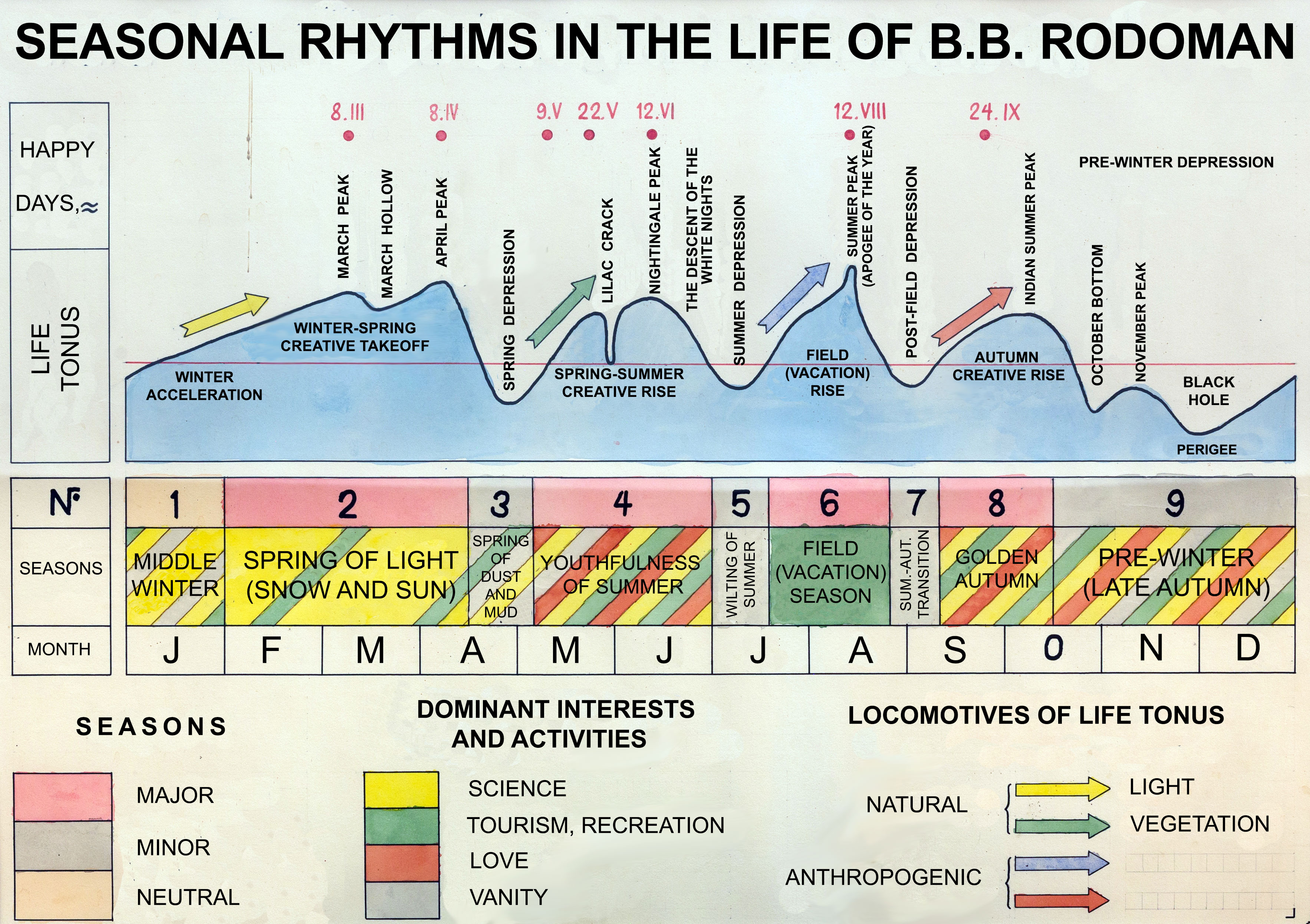We can differentiate between the image as an inner, cognitive reality, and the image as an external, reified representation. The first is closer to the notion of “idea” or even “archetype.” Let’s call it: image/imago. The second can be one of the possible reifications/externalizations of the first. In short, the image/imago is available only to its creator/carrier/visionary/medium, until they represent it somehow to others. The notion of the image/imago has roots in Neoplatonism and in Orthodox iconography and Hesychasm, which is a mystical tradition of contemplative prayer.
Dmitry Zamyatin, Meta-geography: Space of Images and Images of Space (Agraf, 2004), 512.
Henry Corbin and Gilbert Duran were post-Jungian theoreticians and participants in Eranos, an intellectual society dedicated to humanism.
With this in mind, we can recall the theory of reflection that Lenin developed in his 1909 Materialism and Empirio-criticism, according to which “the mastery of nature manifested in human practice is a result of an objectively correct reflection within the human head of the phenomena and processes of nature, and is proof of the fact that this reflection (within the limits of what is revealed by practice) is objective, absolute, eternal truth.” Vladimir Ilyich Lenin, Collected Works (Lawrence & Wishart, 1962), 190.
American geographer William Bunge coined the latter term in his book Theoretical Geography, which was translated into Russian at 1967.
Veniamin Gokhman, Boris Gurevich, and Yulian Saushkin, “Some Basic Problems of Meta-geography,” Report to the 7th Congress of the Regional Science Association International, The Hague, 1967.
V. Gokhman, B. Gurevich, and Y. Saushkin, “Problemy metageografii” (Problems of Meta-geography), in Matematika v ekonomicheskoi geografii (Mathematics in Economic Geography), vol. 77 (1968): 3. Here and below, all translations from Russian-language sources are by the author.
Boris Rodoman, My Geographical Cartoids (2016), 61. Saushkin declared Rodoman to also be one of the founders of theoretical geography in the USSR, pointing to the latter’s pioneering early work of the 1950s, especially “Methods of Individual and Typological Regionalization/Zoning and their Depiction on the Map” (1956). According to Rodoman, “Explaining what theoretical geography is means setting out the contents of meta-geography. And taking a detached view of meta-geography means talking about meta-meta-geography.” Boris Rodoman, Meta-geography (Oikumena Publishers, 2007), 97.
Rodoman, My Geographical Cartoids, 57.
Rodoman, My Geographical Cartoids, 57. While “Polarized Biosphere” is the title by which this cartoid is most commonly known, Rodoman gave it a second title—“A Networked Polarized Landscape”—to provide a more precise scientific description of the diagram.
Rodoman, My Geographical Cartoids, 57.
Boris Rodoman, Polarized Biosphere (OECUMENE, 2002), 12.
See →.
Rodoman, “Landscape-Geographical Bionics,” in Collected Articles (OECUMENE, 2002), 63–64.
Consider Rodoman’s remarks on the crucial role of personal, empirical, bodily interaction with the landscape: “Travels were the main source of my theoretical models.” Rodoman, “My Line in Geography,” in Areas and Networks: Essays of Theoretical Geography (OECUMENE, 1999), 249.
Rodoman, “My Line in Geography,” 63.
Boris Rodoman, “Logical and Cartographic Forms of Regionalization and their Study Objectives,” Soviet Geography, no. 6 (November, 1965): 3–20.
Richard Brook Cathcart, “Improving the Status of Rodoman’s Electronic Geography Proposal,” Speculations in Science and Technology 9, no. 1 (April, 1986); Cathcart, “Seeing is Believing: Planetographic Data Display on a Spherical TV,” Journal of the British Interplanetary Society, vol. 50 (1997). Cathcart notes that the “electronic geography of Rodoman” has been partially implemented by NASA.
Rodoman’s explanation of “Ski Routes around Moscow,” in preparation for the exhibition “Meta-geography: Space – Image – Action,” New Tretyakov Gallery, Moscow, 2015–16.
Boris Rodoman, Seasonal Rhythms in my Life: Problems of Theoretical and Humanitarian Geography (Russian Research Institute of Cultural and Natural Heritage, 2013), 24.
At the April 2019 conference “Navigation Beyond Vision,” held at HKW in Berlin and organized by e-flux, HKW, and the Harun Farocki Institute (which gave rise to this issue of e-flux journal), Kodwo Eshun shrewdly pointed out this peculiarity of Rodoman’s cartoids. He also compared them to diagrams created by W. E. B. Du Bois for a 1900 exhibition in Paris—diagrams that depicted the social position of African Americans. Compared to photography, which shows its object as a “natural fact,” the diagram portrays the flows of power that construct the subject. The theorist Alexander G. Weheliye recently wrote about this in his “Diagrammatics as Physiognomy: W. E. B. Du Bois’s Graphic Modernities,” CR: The New Centennial Review 15, no. 2 (Fall 2015): 23–58.
Rodoman, “My Line in Geography,” 243.
See Vladimir Kagansky, Cultural Landscape and Soviet Habitable Space (New Literary Review, 2001).
Dmitry Zamyatin, “Meta-geography: On the Way to Co-emplacement,” in Meta-geography: Space – Image – Action, exh. cat. (New Tretyakov Gallery, 2015).
Zamyatin, “Meta-geography,” 21. The activity of the Center for Humanitarian Studies, formed and headed by Zamyatin at the Russian Research Institute of Cultural and Natural Heritage, was important in this process between 2004 and 2013, as were several meta-geographical research expeditions carried out by Zamyatin jointly with the Vasiliy Golovanov, Andrey Baldin, and Rustam Rakhmatullin. It can be argued that in the 1990s and 2000s, it was this circle that developed the postmodernist understanding of meta-geography as an “images of space and the space of images.”
Zamyatin, “Meta-geography,” 27.
In 2015–16, Kirill Svetlyakov, Dmitry Zamyatin, and myself mounted the exhibition “Meta-geography” at the New Tretyakov Gallery in Moscow. This exhibition understood meta-geography as an interdisciplinary tool for navigating representations of space in art, science, and everyday life.
Martin W. Lewis and Kären Wigen, The Myth of Continents: A Critique of Metageography (University of California Press, 1997); Xavier Oliveras Gonzáles, Deny Anarchic Spaces and Places: An Anarchist Critique of Mosaic-Statist Metageography (The Anarchist Library, 2010) →.
